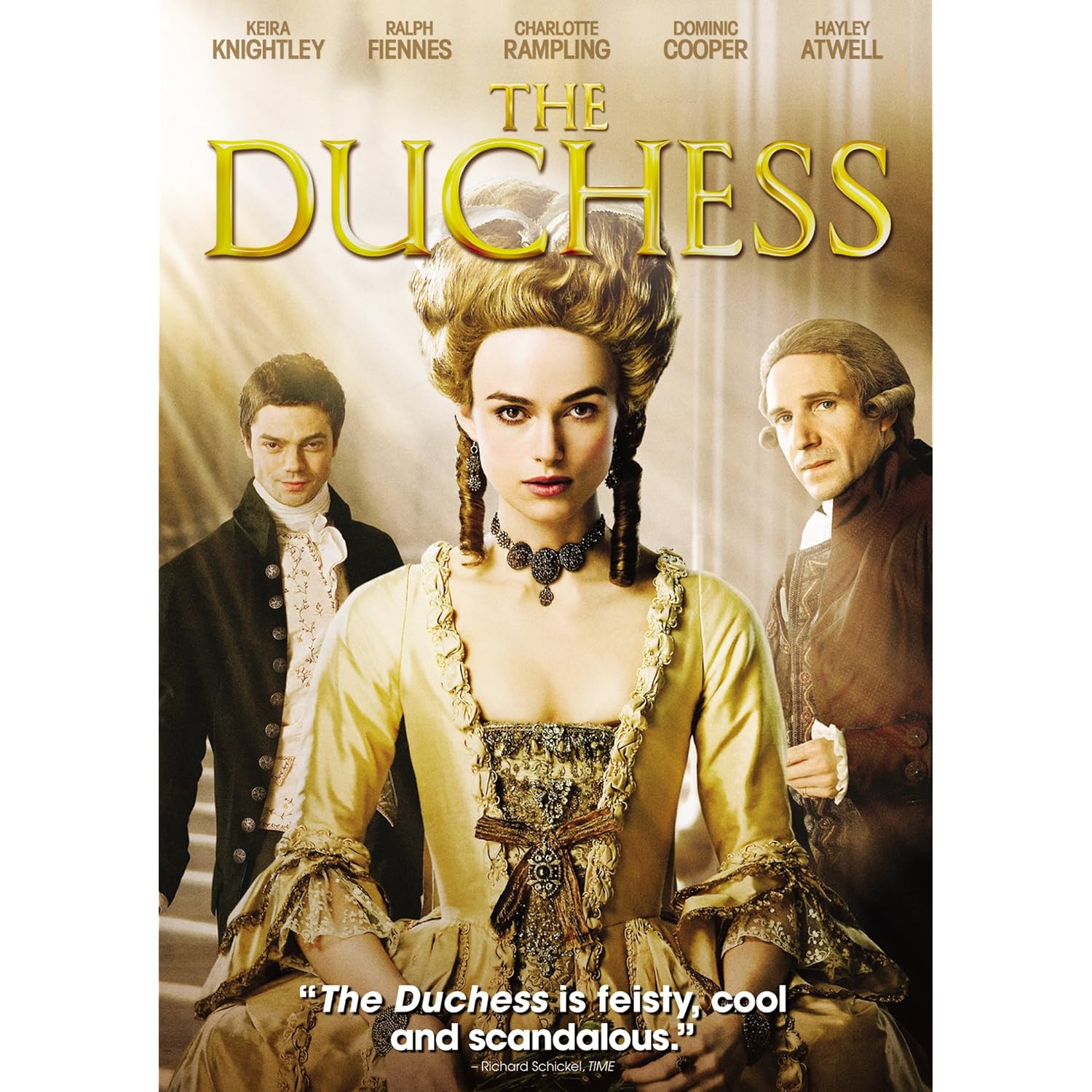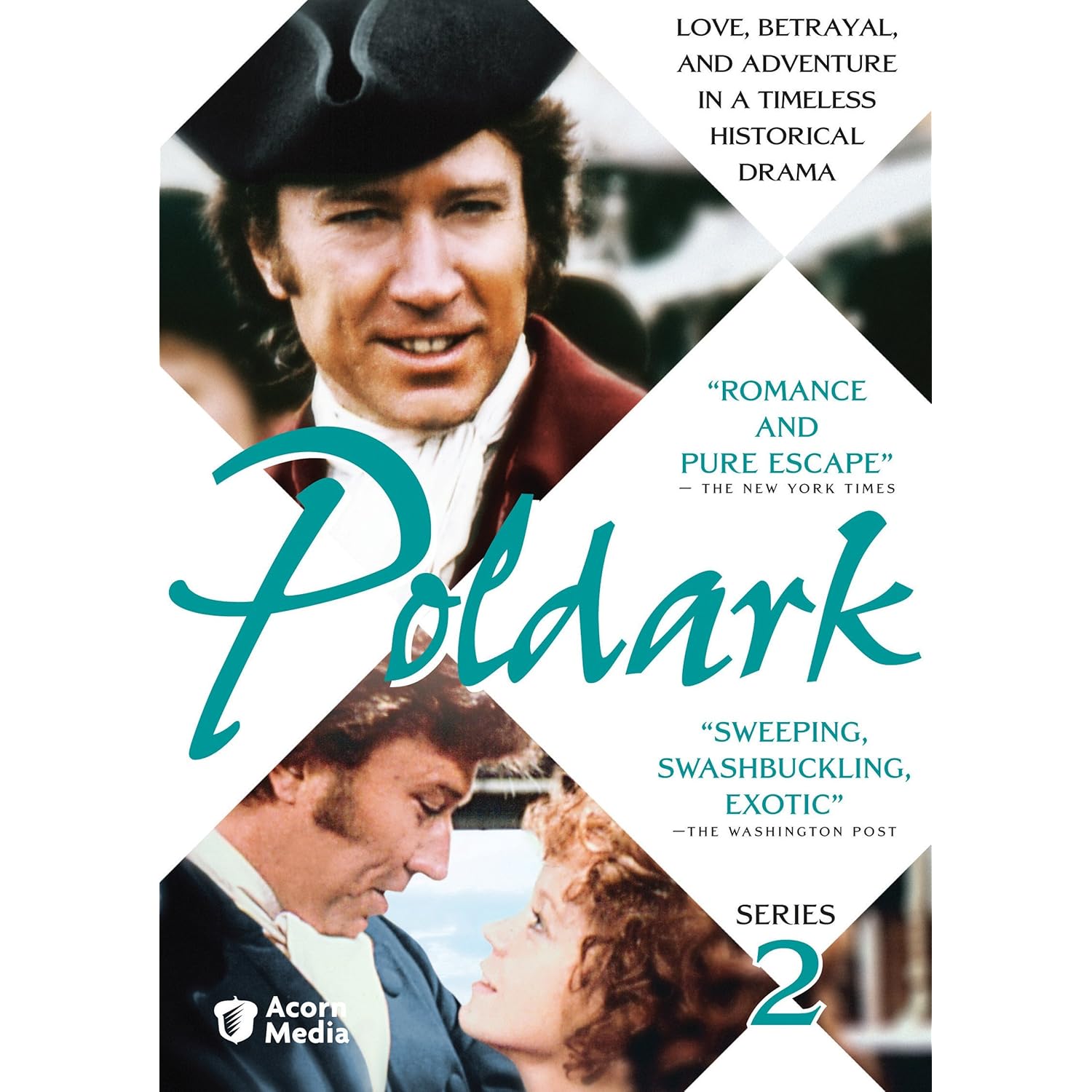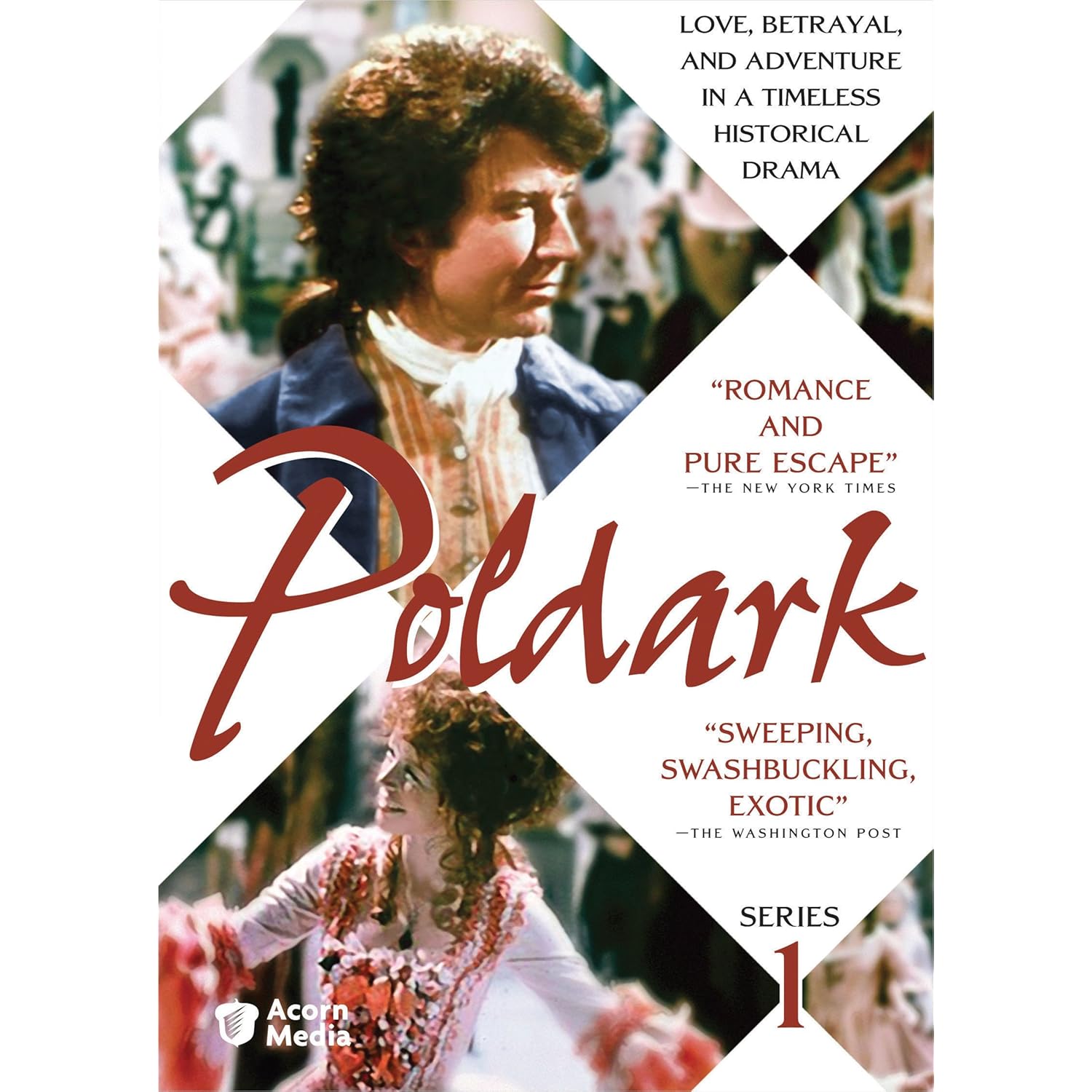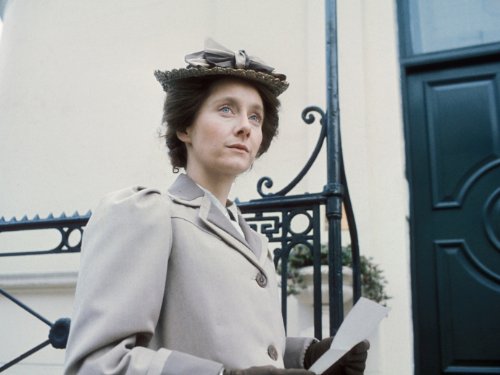What's the one reason why we watch period dramas? Okay the plot is one... Yes, the acting is good... Yes, the heroes are dashing. Okay, so there is more than one reason why we watch period dramas. But one of the most common reasons that we watch period dramas is the costuming. Wouldn't we all love to wear a lot of those fashions that they wore back then today? They were so lovely and elegant! Why don't we wear something like today?
But anyways, we all have our favorite dresses and outfits from period dramas. Here are my top ten favorite period drama dresses.
Showing posts with label Georgian era. Show all posts
Showing posts with label Georgian era. Show all posts
Tuesday, October 8, 2013
Monday, January 28, 2013
Review: The Duchess (2008)
It seems that in the past year, I've seen a lot of movies that take place in the Georgian era, which is great since I had seen very little movies from that era before and I do so love the fashion of that era! Between Amazing Grace, The Scarlet Pimpernel, Mozart's Sister, The Kent Chronicles, Poldark, and now The Duchess, I finally have seen a number of films from one of my favorite fashion eras. We've actually owned The Duchess for a while now (my mom bought it at a low price on Amazon), but it was only recently that I got to watch it. I have seen pictures of it previously and thought the costuming looked good, but I did hear that there was some content with this movie. Off the bat, I want to warn you that this movie is not for children and that it has some mature scenes/themes (my review, on the other hand, doesn't get graphic as to the content), so if you do decided to watch this movie, just be ready to fast-forward.
Synopsis
Based on historical events, The Duchess tells the story of Georgiana, Duchess of Devonshire, and her marriage to William Cavendish, the Duke of Devonshire. At the age of seventeen, Georgiana marries the duke with hopes of a happy life with him, however she soon learns that the duke does not care for her and only wanted a male heir to inherit his title. Though she was in an unhappy marriage, she was loved by the people for her fashion sense. She was frequently involved in politics and helped a young politician by the name of Charles Grey, who she grows very fond of.
 |
| Box Art |
Based on historical events, The Duchess tells the story of Georgiana, Duchess of Devonshire, and her marriage to William Cavendish, the Duke of Devonshire. At the age of seventeen, Georgiana marries the duke with hopes of a happy life with him, however she soon learns that the duke does not care for her and only wanted a male heir to inherit his title. Though she was in an unhappy marriage, she was loved by the people for her fashion sense. She was frequently involved in politics and helped a young politician by the name of Charles Grey, who she grows very fond of.
Monday, October 29, 2012
Review: Poldark - Series 2 (1977)
Remember when I reviewed Poldark: Series 1? Well, since then, my mom and I have finished Series 2, which is also the final series (I guess that's the point where the author stopped at that point). We were very eager to know what will happen next and we ended up finishing this series quickly as for Series 1.
Note: This review will contain spoilers from Poldark: Series 1. If you have not seen Poldark: Series 1 and do not wish to spoil it, do not read this review. If you're interested in Series 1, read my review for it.
Synopsis
Ross Poldark, after re-enlisting in the army, has returned from the army after becoming ill to his wife, Demelza, and finds that his Aunt Agatha's home was bought by his rival, George Warleggan, and his new wife Elizabeth, the widow of Ross's cousin Francis. Meanwhile, Demelza's brothers, Sam and Drake Carne, move to the Poldark's home of Nampara to find some work.
 |
| Series 2 Box Art |
Note: This review will contain spoilers from Poldark: Series 1. If you have not seen Poldark: Series 1 and do not wish to spoil it, do not read this review. If you're interested in Series 1, read my review for it.
Synopsis
Ross Poldark, after re-enlisting in the army, has returned from the army after becoming ill to his wife, Demelza, and finds that his Aunt Agatha's home was bought by his rival, George Warleggan, and his new wife Elizabeth, the widow of Ross's cousin Francis. Meanwhile, Demelza's brothers, Sam and Drake Carne, move to the Poldark's home of Nampara to find some work.
Tuesday, October 2, 2012
Review: Poldark - Series 1 (1975)
And today we have another review brought to you by Netflix (I've been finding more and more period dramas on Netflix as of late. Yay!). I had seen this series around in multiple places: the BBC America catalog, IMDB, and more recently in previews on DVD of other period dramas. Finding out that it was from the 70s, I didn't think too much of it: yeah, maybe I would watch it, but I have other things I have to watch first. Plus, a lot of BBC period dramas from the 70s aren't all that great, right? Well, after finding it on Netflix Instant Streaming and adding it to the Instant Queue, I mentioned it to my mom and one evening we sat down to watch it: after all, we finished watching The Kent Chronicles (which the Part 3 review is coming soon, but I wanted to break up the reviews a little bit) and we wanted to watch something else.
Synopsis
After escaping from a French prisoner of war camp during the American Revolution and his family believing him to be dead, Ross Poldark returns to his hometown in Cornwall in England to find that his father is dead, his home in shambles, the family copper mine nonoperational, and his fiancee, Elizabeth, engaged to his cousin Francis Poldark. Ross must work through his grief over losing Elizabeth while trying to restore his home and run the copper mine that his father left him.
 |
| Box Art |
Synopsis
After escaping from a French prisoner of war camp during the American Revolution and his family believing him to be dead, Ross Poldark returns to his hometown in Cornwall in England to find that his father is dead, his home in shambles, the family copper mine nonoperational, and his fiancee, Elizabeth, engaged to his cousin Francis Poldark. Ross must work through his grief over losing Elizabeth while trying to restore his home and run the copper mine that his father left him.
Tuesday, September 25, 2012
Review: The Kent Chronicles -- Part 2 (1979)
Remember when I reviewed The Kent Chronicles: Part 1? Well, my mom and I continued our way through The Kent Chronicles with the second part!
Note: This review will contain spoilers from Part 1 without any warning (For Part 2 spoilers there will be a warning). If you do not want to spoil Part 1, do not read this review. If you would like to read the review for Part 1, click here!
Synopsis
During the events leading up to the Revolutionary War, Phillip Kent is happily married to Anne Ware, who is expected to give birth to a son soon, and is helping the colonies to work for independence. Meanwhile, after fighting in a duel to defend his honor, Judson Fletcher flees from the south to Boston and ends up joining the militia to fight for independence. There he meets Eph Tait, a poor man who taught himself medicine, and Phillip Kent.
 |
| Box Art (edited) |
Synopsis
During the events leading up to the Revolutionary War, Phillip Kent is happily married to Anne Ware, who is expected to give birth to a son soon, and is helping the colonies to work for independence. Meanwhile, after fighting in a duel to defend his honor, Judson Fletcher flees from the south to Boston and ends up joining the militia to fight for independence. There he meets Eph Tait, a poor man who taught himself medicine, and Phillip Kent.
Monday, July 23, 2012
Review: Mozart's Sister (2010)
I heard about this a while ago and thought the costumes looked great. But then I saw that it was in French, so I assumed that I'd never get a chance to see it. But then, thanks to Netflix, I saw that this movie was available on Instant Streaming. So, I decided to sit down and watch this one day.
Synopsis
Maria-Anna Mozart (also known as Nannerl) at age 14 is traveling with her family across Europe performing with her younger brother, Wolfgang Amadeus Mozart, who is about 10. Leopold Mozart, Nannerl's father, forbids her from composing her own music and from playing the violin and restricts her to playing the harpsichord.
 |
| DVD Box Art |
Synopsis
Maria-Anna Mozart (also known as Nannerl) at age 14 is traveling with her family across Europe performing with her younger brother, Wolfgang Amadeus Mozart, who is about 10. Leopold Mozart, Nannerl's father, forbids her from composing her own music and from playing the violin and restricts her to playing the harpsichord.
Wednesday, July 11, 2012
Wednesday: Guest Post by Melody and Miss Laurie - Historic Hairstyles - Period Drama Fashion Week
During the time periods of many of our favorite period dramas how a lady styled her hair was as important as the fashions she wore. Being stylish from head to toe was important for a young lady who entered society, particularly if she hoped to catch a rich husband. For us the hairstyles in period dramas are just so fun to admire and it's interesting to see how hairstyles changed through the eras. Let's take a look at the fads in historic hairdressing through the eyes of our favorite period dramas!
Georgian Era
Hairstyles that were poufy and piled high was the desired look in this era. Ladies would make their hair as 'big' as they could (by teasing it and using false hair, hair rats, etc.) before putting it up--preferably leaving several long curls tumbling down the back. Or perhaps for a softer, simpler look: a regular, smooth pompadour with an elegant curl or two on the shoulder. Powdered wigs were also popular during the early part of the 1700's but were given up by the time Jane Austen was born because they were often called "vulgar" by critics.
Edwardian Era / Early 1900s
In the 1900s, the definitive style was the pompadour. It's the opposite of the hair being pulled tightly away from the face--it is as loosely and expansively as possible swept up into a bun--a rather romantic-looking hairstyle that was an important part of the popular Gibson girl style. The 1910s brought more simplicity; pompadours were still common, but becoming popular were hairstyles lower down on the back of the head; one common look was a middle part with the hair twisted back on both sides into a low bun, or making the twist continue all around the head, with the hair tucked in at the back rather like a Gibson-tuck.
1920s / 1930s
As more ladies went to work after World War I hairstyles became even more simple. Long hair was oftened pinned into a bun at the back of the neck to keep it our of the way. With the wave of flapper styles more ladies began to sport very short hairstyles which they sometimes curled, smoothed very straight for a sleek look, or had it "set" into a stiff-looking wave at the temples or all the way around the head, which often accompanied the stereotypical "bob."
Hairstyles in the 1930s were quite similar to the previous decade, but short hair was more frequently curled on the sides and ends to to make a softer look, and the very short, chin-length hairstyle was becoming outdated. Like the 1920s, top portions of long (and short hair) was frequently given stiff wave curls before being pulled back into a bun at the nape of the neck.
~~~~~
Top: The Scarlet Pimpernel 1982, Cranford, Amazing Grace
Bottom: Pirates of the Caribbean 2003, Wuthering Heights 1992, Sense & Sensibility 2008
~~~~~
Top: Pride & Prejudice 1995, Sense & Sensibility 2008, Emma (Miramax)
Bottom: Sense & Sensibility 1995, Emma (A&E), Pride & Prejudice 1995
Regency Era
Hair in the Regency period was rather simple compared to the surrounding eras (except perhaps the people who loaded their hair with feathers and other hair decorations for balls and special occasions), yet with an elegant charm. Styles resembled fashions of ancient Greek and Rome and ladies always wore their hair up. A common style was to have a middle part with curls framing the face, and the rest of the hair put up in a bun or a slightly more tumbling, pinned-up-curls sort of look. Silk ribbons or scarfs were often used to tie around the head and the bun and ladies like Jane Austen were also fond of wearing brightly colored turbans adorned with feathers or jewels.
As pretty as it might look in the movies ladies of this era would not have worn their hair down in public, it would have been considered improper.
~~~~~
Top: The Young Victoria, Little Dorrit, Wives & Daughters
Bottom: Great Expectations 2011, Wives & Daughters, Jane Eyre 2006
Romantic Era / Early Victorian Era
Fashions became more intricate in this era. Hair was often pulled tightly away from the face and into a knot or a very carefully-arranged, stiff-looking hairdo high on the top of the head, with curls or ringlets on the side. A more simple look was to part the hair in the middle and smooth it over the ears and perhaps braid the side pieces before adding them back into a bun. (You know, the stereotypical Jane Eyre style.) And we mustn't forget all the artificial hair additions and decorations; feathers, fans, flowers and fruit might be added to the evening styles.
~~~~~
Top: Cranford, Bleak House 2005, Cranford
Bottom: North & South 2004 (twice), Bleak House 2005
Mid-Victorian Era
As the Victorian era progressed hairstyles loosened to create softer and sweeter looks. Hair put up at the back of the head was pinned lower than the romantic era, often braids and intricate folding of the hair was added to the buns. Younger ladies would sometimes wear some of the back in ringlets to give a sweet, almost angelic look that supported the Victorian ideal that ladies were delicate flowers.
~~~~~
Top: The Way We Live Now, Daniel Deronda, Little Women 1994
Bottom: Daniel Deronda, Our Mutual Friend 1999, Daniel Deronda
Late-Victorian Era
Extravagant is the word for this later part of Queen Victoria's reign! Hair was arranged in piles of curls at the back of the head with long ringlets left to fall near the base of the neck. Fake hair pieces were very popular during this time and were added to give hair more height, more curls or even braided headbands. Even the more simple day time styles would contain more intricate braiding and arranging of the hair with an abundance of curls.
~~~~~
Top: Anne of Green Gables: The Sequel, Downton Abbey, Somewhere in Time
Bottom: The Winslow Boy, Road to Avonlea, Downton Abbey
~~~~~
Top (1920s): House of Eliott, Upstairs Downstairs 2010, House of Eliott
Bottom (1930s): Wind At My Back, Poirot: Sad Cyress, Poirot: The Mystery of the Blue Train
~~~~~
If you're like us you'll probably want to try some of these historic hairstyles on your own hair. Here's some of our favorite historic hairstyle tutorials, but keep in mind that many of the fine ladies would have had a maid to style their hair before a ball so it's sometimes tricky to get the styles right yourself.
Locks of Elegance (Georgian through Edwardian styles), Historical Hairstyles (a few tutorials including Elizabeth Swann's Georgian do and Margaret Hale's Mid-Victorian do), Ups and Downs (lovely Regency styles with a few Victorian) and Rapunzel's Resource (tons of long hair period drama styles that can easily be adjusted for medium length hair).
Thank you for joining us in looking at these old-fashioned hairstyles from period dramas! We hope you've enjoyed it. There are so many lovely eras, but Miss Laurie's favorite would be the Regency era and the Mid-Victorian as a close second. Melody is having a very hard time deciding, and although the Regency era is always wonderful and marvelous, her favorites might be Mid-Victorian and Edwardian. (Maybe.)
Many thanks to Miss Elizabeth for having us guest post! We had a lot of fun.
Miss Laurie writes the lovely blog Old-Fashioned Charm and Melody is the authoress of the charming Regency Delight ~Jane Austen, etc.~.
Which historic era has your favorite hairstyles?
Miss Elizabeth Bennet: Thank you, Miss Laurie and Melody, for guest posting!
Miss Elizabeth Bennet: Thank you, Miss Laurie and Melody, for guest posting!
Monday, July 9, 2012
Monday: Hats from Different Eras - Period Drama Fashion Week
Only in modern times have men and women ventured outdoors without hats. Before, ladies and gentleman always wore hat or some form of head covering. How else would one avoid damage from the sun and go out of doors at the same time? So here, I'm highlighting some period drama hats:
Georgian
Regency
Post Regency
Victorian
Edwardian/Teens
God Bless,

Sunday, July 8, 2012
Sunday: Favorite Georgian Outfit (What's Your's?) - Period Drama Fashion Week
Today's next post is my favorite Georgian Outfit. Now, I haven't seen many Georgian Era movies, so I'm limited as to my favorite. But the one that stands out to me is:
This dress worn by Anne Howard in The Patriot. I love how it looks! It's very light and pretty and I love the criss-cross on the stomacher. This dress is a dress that I would love to sew one day.
What is your favorite Georgian Outfit? Post about it on your blogs or leave a comment!
God Bless,

Sunday: Character Costumes Highlight: Barbara Spooner - Period Drama Fashion Week
Our first character whose costumes I am highlighting is Barbara Spooner from Amazing Grace.
A little about Barbara
Barbara eventually becomes the wife of abolitionist William Wilberforce. They found that they had their opposition to slavery in common and fell in love and married.
Dark Purple Jacket with Matching Hat
Dark Purple Jacket with Matching Hat
Dark Green Dress with Lace
Which of these two dresses of Barbara's is your favorite? Or is your favorite one that isn't up here? Leave a comment!
God Bless,

Subscribe to:
Posts (Atom)









.jpg)





































